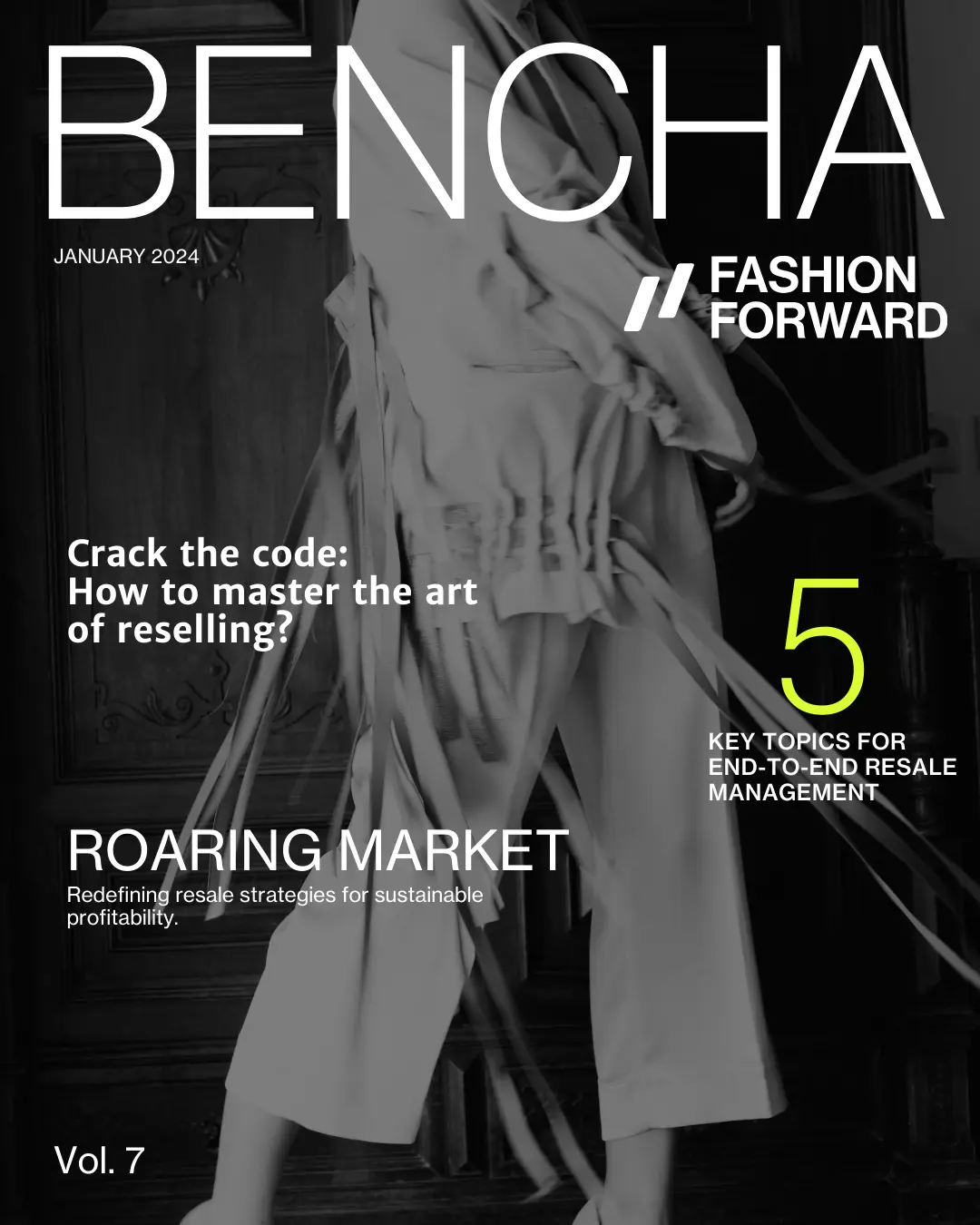Redefining resale strategies for sustainable profitability.
Discover tailored resale strategies amid the thriving second-hand market, revolutionizing sustainability and profitability with end-to-end solutions.

Towards sustainable profitability
The global second-hand market is witnessing an unprecedented surge, hurtling towards an estimated $350 billion by 2027, outpacing traditional retail by an astonishing 11 times in just five years. A significant 31% of secondhand sellers reinvest their earnings from preowned goods into high-end purchases, emphasizing the financial opportunities inherent in the resale sector.
47% of secondhand sellers bought new high-end goods with the money they made selling preowned goods.
62% of consumers would be more willing to buy from fashion brands that partner with secondhand players.
Buying a used garment extends its life by 2.2 years on average, reducing its carbon, waste and water footprint by 73%.
Redefining resale strategies
Meeting the demands of a momentous market trend requires a strategic approach. One effective method involves collaborating with partners offering a holistic approach, enabling the creation of tailored resale solutions. Crucially, from the outset, it's essential to incorporate end-to-end resale management that encompasses the entire resale process.
To improve the market's response and align with business objectives, adopting a comprehensive management style can be highly effective. These tailor-made solutions should include every aspect of the resale process, from price valuation to customer experience, and incorporate data to enhance efficiency and boost success rates. Focusing on smooth user interactions and optimized logistics, these strategies navigate the entire resale process with ease, ensuring a seamless experience and the best possible results from start to finish.

5 key topics for end-to-end resale
If you aspire to profit from reselling, it's imperative to adopt an end-to-end approach and diligently attend to every detail.
Here are some critical points to consider:
- Sourcing and Procurement
Acquiring quality pre-owned fashion items through various channels, including consignment, partnerships, or direct purchases. This involves evaluating authenticity, condition, and desirability of items. - Inventory Management
Cataloging, organizing, and tracking the inventory of pre-owned fashion items. This includes warehousing, categorization, and implementing systems for efficient storage and retrieval. - Quality Control and Authentication
Implementing rigorous processes to authenticate and ensure the quality of pre-owned items. This involves training staff, utilizing authentication technologies, and maintaining standards to guarantee authenticity. - Marketing and Sales
Creating strategies to market pre-owned items effectively. This includes leveraging online platforms, social media, partnerships, and targeted campaigns to reach the right audience and drive sales. - Logistics and Fulfillment
Managing the shipping, packaging, and delivery of sold items. Optimizing logistics to ensure timely and secure delivery while providing a seamless customer experience.

Innovative resale approaches
Resale approaches can be implemented in various ways, depending on the business's needs.
Three effective ways to integrate resale into operations:
Integrated solutions
Revolutionize resale by seamlessly incorporating pricing valuation, customer engagement, logistics, and more, transforming business operations.
Stand-alone solutions
Offer customizable resale options, maximizing customer value with minimal business effort, resembling 'white label' approaches for a hands-off solution.
Premium take-back systems
Empower businesses to control product reintegration, fostering brand loyalty and reducing waste while building customer relationships.